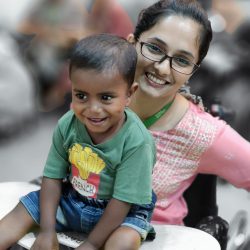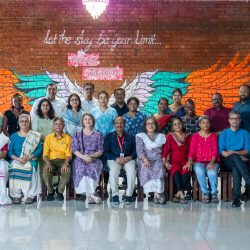What Do the Elderly Suffer From?
Dr Supten Sarbadhikari invites your attention to a study conducted in Tamil Nadu and Kerala about the problems of the elderly. Reported in The Hindu, New Delhi edition:
Joint pain ails the elderly in Tamil Nadu; hypertension in Kerala
AARTI DHAR – THE HINDU – NEW DELHI, December 29, 2011
The commonest self-reported morbidity among the elderly in Tamil Nadu is chronic joint pain, while in neighbouring Kerala hypertension is highly prevalent, according to a new study conducted in the two States.
Over 57 per cent of senior citizens in Kerala suffer from hypertension and 32 from diabetes. The figures for Tamil Nadu are 20 and 14 per cent.
“The elderly are an important segment of our population. They have played a key role in shaping the future of the young India. Their share is expected to be at 12.4 per cent by 2026 [as per the Central Statistical Organisation’s Situation analysis of the Elderly in India, 2011].” Therefore, it is essential “to make special provisions for the health care of the elderly and, in particular, offer treatment and diagnostic services for the management of non-communicable diseases. Also, it is essential to immediately initiate screening of people over 50 for key non-communicable diseases and simultaneously start health education for the ageing population,” says K. P. Rajendran, team leader of the research study.
The study was undertaken to validate the improvement brought about by projects run by HelpAge India and Cordaid (Catholic Organisation for Relief and Development Aid). It was done by the capacity-building organisation Four X 4 Consulting with support from the Institute of Palliative Medicine, Kozhikode, Kerala, and the Manakula Vinayagar Medical College and Hospital, Puducherry, covering 1,800 families in Tamil Nadu and 450 families in Kerala by random sampling.
In Tamil Nadu, the commonest self-reported chronic morbidities among the elderly were joint pain (61.3 per cent), eye and ear problems (38.4 per cent), hypertension (20.7 per cent), diabetes (13.9 per cent), heart diseases (4.4 per cent), respiratory illness (2.9 per cent), stroke (1.2 per cent) and mental illness (0.6 per cent).
In Kerala, 71.6 per cent of the elderly had at least one of the chronic morbidities at the time of survey with hypertension topping the list (57.3 per cent), followed by joint pain ( 37.5 per cent), diabetes and ear/eye problems (32 per cent each), heart disease (17.1 per cent) and asthma (11.4 per cent).
In Tamil Nadu, most of the chronically-ill elderly people (46.5 per cent) accessed government health care services and 31.4 per cent went to private hospitals. Five per cent accessed health care offered by village-based clinics of the HelpAge programme, while 15.2 per cent took no treatment. Utilisation of the Indian systems of medicine was less than 1.5 per cent on average.
In Kerala surprisingly most of the elderly received treatment from private hospitals (55.8 per cent) and 34.6 per cent from government hospitals. Five per cent adopted the Indian systems and 2.4 per cent did not take any treatment.
The study covered four domains of quality of life — physical health, psychological health, social relationships and environment.
Interesting that in Tamil Nadu, the majority of the elderly sought help from the Government agencies while Keralites seemed to seek private hospitals?




